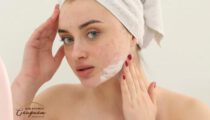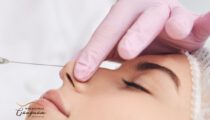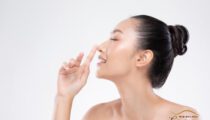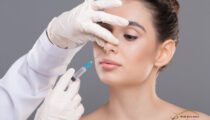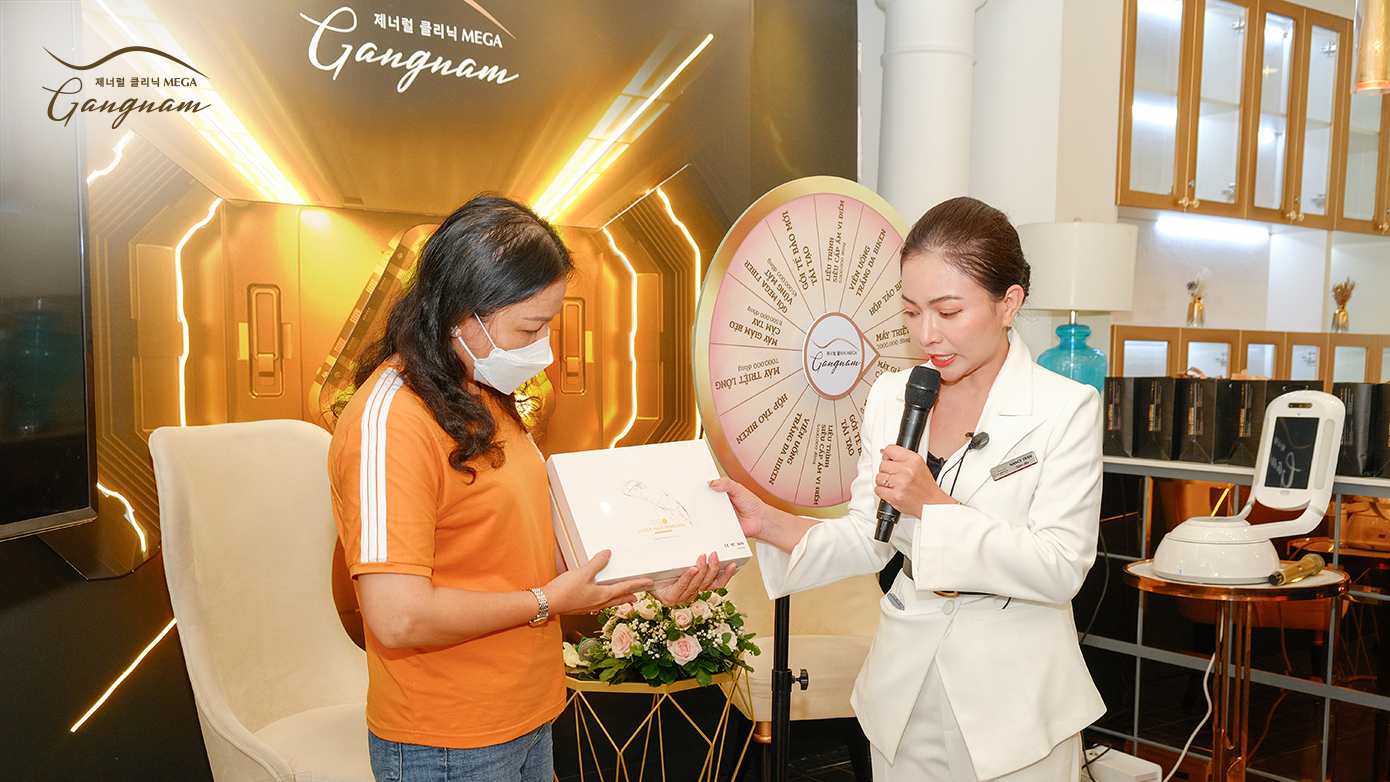[Beauty Tips] Why should you avoid squeezing pimples at home?
Acne is a common dermatological issue for most people at various stages of life. This condition arises from various causes, including both internal and external factors. While acne itself is not dangerous, allowing it to become inflamed or infected can lead to various problems. This article will provide detailed explanations of why should you avoid squeezing pimples at home. Let’s explore it now!
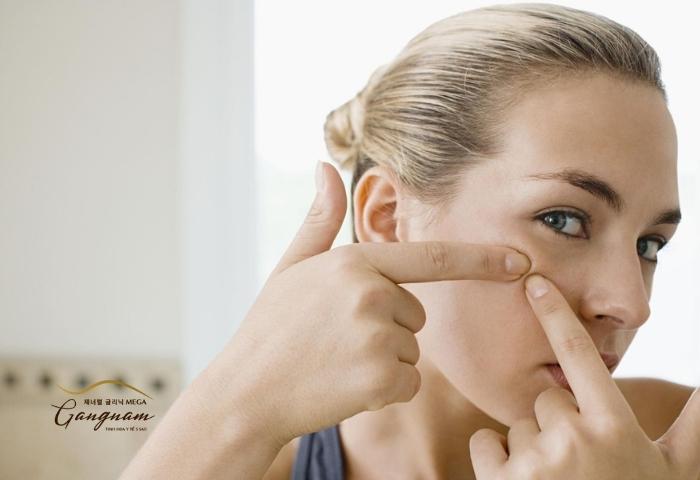
Why should you avoid squeezing pimples at home? How do doctors respond to this information?
Dermatologists explain why you should not squeeze pimples at home
Firstly, it’s important to understand that acne is the result of clogged pores due to oil, sebum, and dead skin cells. Along with external environmental factors, there are internal hormonal changes in the body. However, the most direct cause is the inflammatory activity of P.acnes bacteria on the skin surface. Squeezing pimples at home without meeting technical and hygienic requirements may cause the acne to spread and develop more rapidly. Specifically:
- The skin acts as a protective barrier against bacteria and harmful substances from the outside. Squeezing pimples can cause damage to the epidermis, no matter how small, opening the door for bacteria to penetrate deep into the skin, leading to infection. This can result in infections, damage to blood vessels, bleeding, swollen cysts, or hidden under-the-skin inflammation. In the long run, inflamed pimples can lead to persistent discoloration and permanent scarring on the skin, diminishing self-confidence and aesthetics.
- Squeezing pimples can quickly spread bacteria from the original site to the surrounding skin, leading to the appearance of new pimples. This can create a cycle that makes it difficult to treat acne conclusively, often causing serious effects on one’s appearance.
- DIY pimple squeezing often lacks proper hygiene and technique. You may not wash your hands thoroughly before squeezing, and the tools used may not be clean, increasing the risk of infection. Squeezing too hard or repeatedly in one area can strain the facial skin, promoting the risk of inflammation later on. This situation is even worse for those with oily or acne-prone skin.
- Lastly, squeezing pimples is not always an effective way to remove the pimple’s core. This action can cause damage to the skin without providing any real benefits. It’s recommended to consult directly with a dermatologist to accurately analyze the skin condition, receive suggestions for safe and effective treatment methods, and cope with the phenomenon of acne recurrence.
Some types of pimples can be safely squeezed at home and the proper way to do it
It is not advisable to self-squeeze pimples that are painful, itchy, red, contain fluid, or pus. Doing so may lead to skin infection, bleeding, the spread of pimples, and the development of permanent discoloration and scarring.
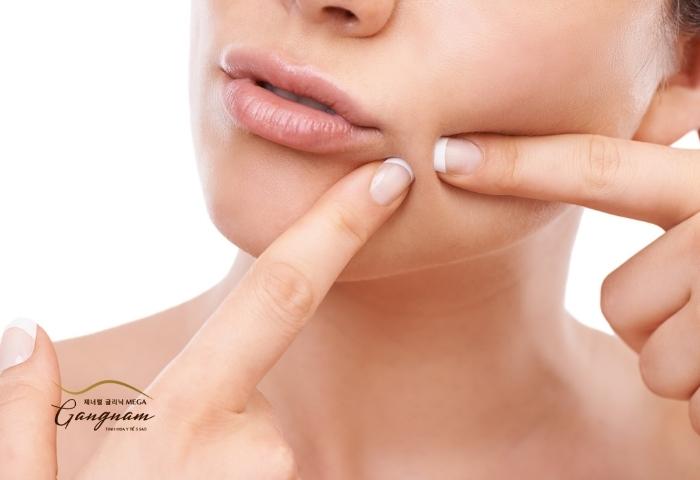
Why shouldn’t you squeeze pimples at home? Some types of pimples can be squeezed, but it requires the right technique.
While it is possible to self-squeeze certain types of pimples at home, it is crucial to follow the correct technique and adhere to hygiene requirements. It’s important to note that only pimples without pus, inflammation, redness, and with a very small size should be considered for this method. Specifically, whiteheads or blackheads fall into this category, as they contain only a plug of sebum and dead skin cells. These types of pimples are typically located beneath the skin (whiteheads) or partially protrude above and undergo oxidation (blackheads).
Squeezing blackheads or whiteheads can be considered a step in dealing with pimple plugs, aiding in more effective pimple treatment. Here is a guide on how to safely squeeze pimples:
- Step 1: Trim your nails neatly and wash your hands thoroughly. Use an antiseptic solution for your hands before proceeding.
- Step 2: Wash your face with warm water and use a gentle, non-drying facial cleanser to clean your skin.
- Step 3: Use a specialized pimple extractor or tweezer designed for squeezing pimples. Before using, disinfect the tool with alcohol.
- Step 4: Gently press the pimple extractor onto the pimple area and apply slight pressure to push the plug upward. Avoid excessive force to prevent skin damage.
- Step 5: Use a cotton pad soaked in saline solution to wipe the squeezed area. Finally, apply a treatment product containing salicylic acid or benzoyl peroxide (as directed by a doctor) to prevent pimple recurrence and reduce bacteria.
How to Effectively and Safely Treat Acne at Home?
For better at-home pimple treatment, special attention should be given to the cleansing step. This helps eliminate excess oil, bacteria, impurities, and dirt on the surface, which are the main causes of inflammation. Choose facial cleansers containing low concentrations of AHA or salicylic acid to enhance the cleansing effect. When dealing with pimples, avoid using too many cosmetics, as this can worsen clogging. However, it’s still essential to use moisturizer to keep the skin hydrated and sunscreen to protect against UV rays.
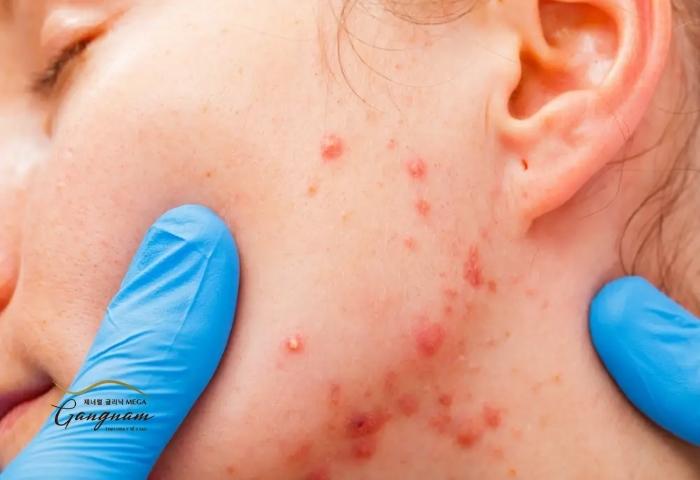
Why shouldn’t you squeeze pimples at home? Consult with a doctor for specific advice
In addition, for more complex acne issues, experts also guide some main treatment methods as follows:
Topical Medications
- Tretinoin (Retin-A): Tretinoin belongs to the retinoid group, capable of promoting skin cell regeneration, removing dead skin cells, and brightening the skin. It also helps reduce inflammation and inhibit the development of acne cysts. Tretinoin is usually applied in the evening after cleansing the skin. Initially, it may cause irritation such as redness, peeling, and dryness, but effectiveness is observed after a period of use. It also has the ability to fade acne scars.
- Adapalene (Differin): This is another popular retinoid used to treat acne vulgaris. Adapalene helps eliminate dead skin cells, reduce inflammation, and destroy acne-causing bacteria. Similar to tretinoin, initial use may cause mild irritation, but effectiveness appears after a period of use.
Additionally, there are supportive medications for acne treatment that are prescribed, such as Benzaclin, Duac, Stievamycin, Finacea, Azelex, etc. The choice depends on the actual condition of the skin, and the doctor will prescribe medications with active ingredients suitable for you.
Oral Medications
- Antibiotics: Antibiotic-containing medications such as tetracycline or doxycycline may be prescribed to reduce inflammation, limit the rapid spread of bacteria causing acne from self-squeezing or ruptured inflammatory acne.
- Isotretinoin: This type of medication is usually reserved for severe and treatment-resistant acne cases. Isotretinoin controls the activity of sebum production and helps address the root cause of acne. However, it can cause side effects and requires close monitoring by a doctor.
Professional Treatments
- Blue Light and IPL (Intense Pulsed Light): This technology is often applied to severe cases of acne, inflammation on a wide surface, and deep damage. Blue light and IPL are believed to have strong antibacterial properties, better controlling acne compared to other treatment options.
- Laser: Laser technology can be used to remove developing acne cysts after the skin has healed. Additionally, doctors often recommend laser application after acne treatment to improve post-inflammatory hyperpigmentation and stimulate skin cell regeneration.
- Corticosteroid Injections: Corticosteroid injections are commonly used in cases of extremely severe and inflamed acne or when the body does not respond to traditional treatment methods. The doctor will inject corticosteroids directly into the swollen acne area. Although effective, this component can also cause some health side effects. Therefore, the use of corticosteroids is often limited and closely monitored by a doctor.
Restoring the skin after acne treatment – How?
An essential part of acne treatment is patience. Acne does not disappear immediately after a few days or even weeks. Strictly adhere to the instructions and recommendations of the doctor to improve the skin more effectively.
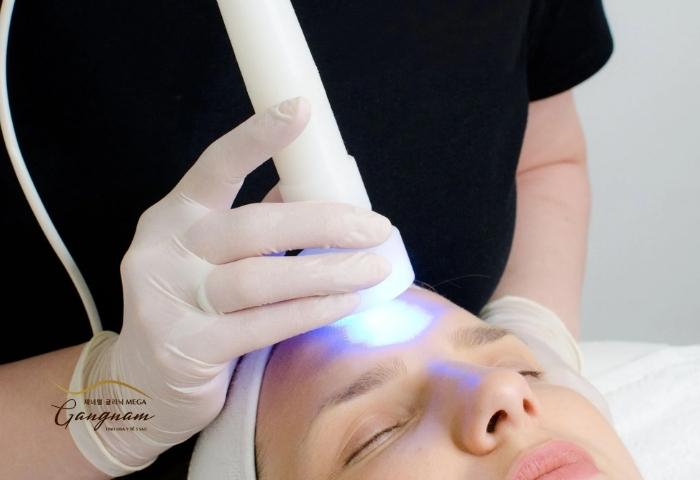
Applying cosmetic procedures to fade scars after acne treatment
For cases after recovering from acne where the skin has healed but shows signs of dark spots and acne scars, considering professional cosmetic procedures for better skin restoration and regeneration while minimizing pigment issues is advisable.
For red or dark-colored acne scars, you may consider the Mega Fiber White treatment. Although this method is often applied for treating melasma, its impressive effectiveness in restoring pigmentation and achieving even skin tone is noteworthy.
For other post-acne skin issues accompanied by signs of aging, you might also contemplate exclusive rejuvenation technologies that aid in skin whitening, scar treatment, and filling in pitted areas caused by acne, such as collagen thread lifting and stem cell infusion.
The above is our article aimed at explaining why squeezing pimples at home is not recommended. We hope this information helps you improve your skin-related concerns. If you have any further questions or require advanced technology treatment for acne-prone skin, post-acne skin damage, or premature aging, please contact us directly via the hotline: 093.770.6666 for immediate assistance!





